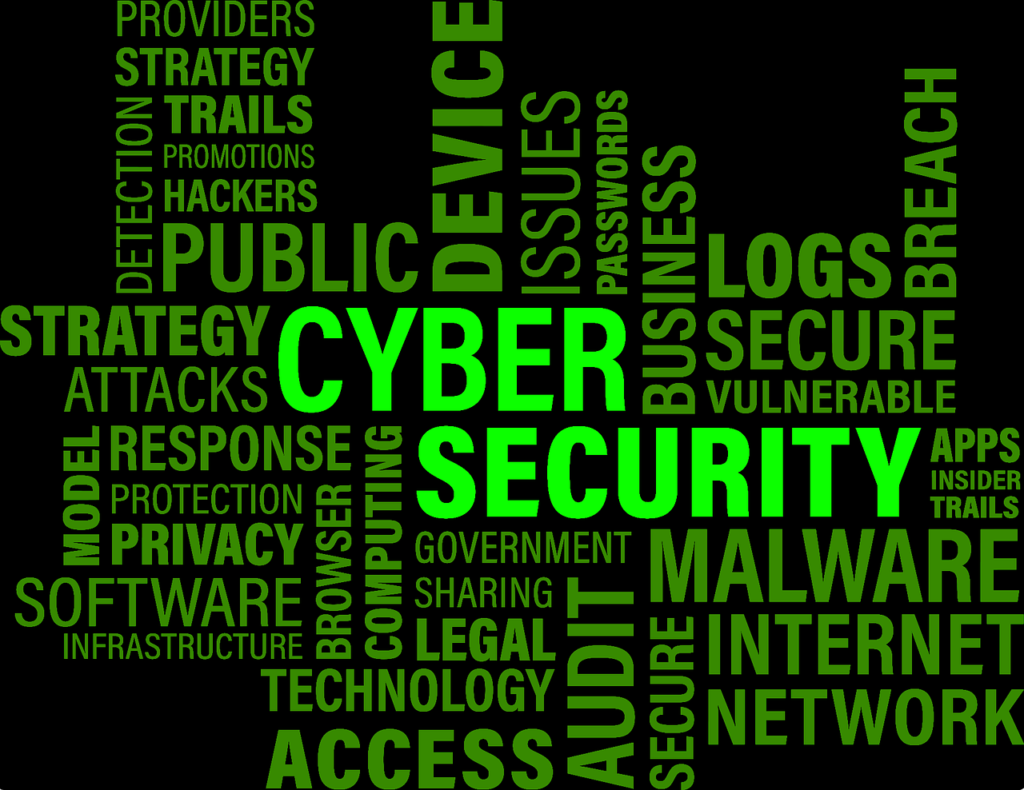Much of the work that happens in today’s business world, occurs across the digital landscape. This means there is an ever-increasing requirement to keep data secure. An advanced degree like the Cybersecurity Online MBA is an excellent option for professionals focused on information systems security and business management. An Online MBA is an excellent choice as it provides students with solid business and managerial foundations that translate across industries and roles. An emphasis on cybersecurity puts learners in a high-demand field.

The landscape of advanced business programs has significantly evolved since the advent of the Master’s of Business Administration program over a hundred years ago. The demand for skilled and knowledgeable leaders has skyrocketed, as has the need for this popular advanced degree in business training. Graduate students worldwide are constantly earning top on-campus and online MBA degrees to hone their leadership skills and solidify their opportunity to climb the organizational ladder quickly. For over a decade, this professional degree has grown in depth and breadth.
What was once a basic business degree has transformed into a comprehensive program that encompasses specializations, majors, concentrations, and certificates covering specialized business topics and business sector/job specialties. Distance learners can currently pursue an Online MBA program with a specialized curriculum in fields like finance, marketing, international business, IT, entrepreneurship, human resources, supply chain management, and cybersecurity, with more options added every year.
This ranking guide explores the critical Cybersecurity Online MBA.
Cybersecurity Online MBA
A Cybersecurity Online MBA gives active business leaders the tools and knowledge necessary to build and oversee systems that keep information safe in today’s digital world. Unfortunately, cybersecurity continues to be a blind spot for many organizations to some degree. And as some major retailers and enterprises have discovered in recent years, lackluster security practices can have overwhelming consequences. Management with training in data protection is essential for the long-term success of an organization. A Cybersecurity Online MBA will prepare graduate students to manage the teams that handle and prevent security threats.
Coursework
Along with the standard MBA coursework that builds up your managerial skills, you can also expect to learn about current security solutions, analyzing trends, intelligence, and processes to anticipate and respond to cyber threats. Students will learn how to make recommendations to an organization based on a risk assessment while giving recommendations that reduce their vulnerability to cyberattacks.
Core coursework within a cybersecurity specialization can include cloud security, IT risk assessment, cybersecurity ethics, laws and regulations, and cybercrime and cyberterrorism. These elective courses are added to those focused on organizational behavior, business ethics, business communication, finance, marketing, and operations management that you can expect from an Online MBA program. Many MBA programs conclude with a capstone project designed to give business students hands-on experience in the field.

Some potential business students are unaware that Cybersecurity Online MBA programs feature the same quality education as traditional, on-campus programs, but with the added benefit of flexibility and convenience. These distance degrees allow students to balance education, work, and family. Course schedules tend to be highly adaptable as many programs provide a combination of synchronous and asynchronous learning. It is essential to note whether the degree you are interested in requires on-campus residencies or visits and, if it does, whether students can make that work for them or not. With modern online educational platforms, distance learning is more interactive and engaging than it ever has been. Also, as technological fluency is a hallmark of today’s business world, there is no better way to get up to speed than by pursuing an online MBA.
Careers
Job opportunities for professionals holding an MBA in cybersecurity are in virtually every industry, including finance, healthcare, government, and retail. While most cybersecurity functions are carried out behind a desk, there is also a fair amount of fieldwork depending upon a professional’s specific concentration. Careers in cybersecurity can include project managers, cybersecurity advisors, information security analysts, and cybersecurity engineers. This is a continually evolving field offering high pay. According to the U.S. Department of Labor’s BLS, an information security analyst makes an average salary of over $100,000 annually.
Cybersecurity Field
Before We Go Further, Let’s Define and Understand What Cybersecurity Is
Cybersecurity is the practice of protecting programs, systems, and networks from digital attacks. Cyberattacks are typically aimed at accessing, altering, or destroying sensitive information, extorting resources from users, and interrupting intended business processes.
Implementing practical cybersecurity functions is particularly challenging in today’s modern business world as there are more devices than ever, and attackers are becoming more innovative.
What is essential to know about cybersecurity?

A practical cybersecurity approach features multiple layers of protection distributed amongst the programs, computers, networks, and data one intends to secure. In any organization, the people, technology, and processes must all interlock to create an effective barrier from cyber-attacks. A comprehensive threat management system can automate integrations through security products and initiate key security operations functions like detection, investigation, and solution.
The Importance of People Within Cybersecurity
For any system to be effective, all users must understand and comply with an organization’s data security principles, including using strong passwords, being selective of attachments in email, and backing up all data.
The Importance of Processes Within Cybersecurity
All organizations must create a framework for how they deal with attempted and successful cyber-attacks. A well-respected framework can guide an organization by explaining how it can protect systems, identify threats, detect/respond to attacks, and repair itself after successful attacks.
The Importance of Technology Within Cybersecurity
Technology is vital to giving individuals and organizations computer security tools to protect themselves from cyber-attacks. Three main sectors must be protected: endpoint devices, including routers, computers, smart devices, networks, and the cloud. Technologies used to protect these sectors include malware protection, next-generation firewalls, DNS filtering, antivirus software, and email security solutions.
Cybersecurity is More than Just Business
In today’s networked world, everyone benefits from effective cyber-defense programs. At the consumer level, a cybersecurity attack looks like anything from identity theft to extortion and fraud to the loss of valuable data like family photos. We all rely on critical infrastructures like hospitals, power plants, and financial service organizations. Securing these and other networks is essential to our society’s well-being.
Everyone benefits from cyberthreat researchers’ efforts, like the team of over 200 threat researchers at Talos, who monitor and investigate emerging threats and cyber-attacks. This team reveals new vulnerabilities, educates the public on the need for cybersecurity, and strengthens open-source tools. Its work helps to make the Internet safer for all users.
What Types of Cybersecurity Threats Exist?

Phishing is the act of sending fraudulent emails that look like correspondence from reputable sources. It aims to steal sensitive data like login credentials and credit card numbers. It is the most popular type of cyber-attack. Users can help protect themselves from this cyberattack through education and technology solutions that filter malicious emails.
Malware is software designed to help hackers gain unauthorized access or cause damage to an unknowing user’s computer.
Ransomware is malicious software designed to extort money from users by blocking access to files or a computer system until the ransom is satisfied. Victims who pay a ransom cannot guarantee that the vulnerable files will be recovered or the system restored.
Social engineering is a tactic that adversaries utilize to trick users into revealing sensitive information. They may solicit monetary payments or gain access to confidential data. Social engineering can also be combined with any of the above threats to make victims more likely to trust a malicious source, click on links, or download malware.
What is the History of Cybersecurity?
Cybersecurity’s story began in the 1970s when terms like logic bombs, ransomware, spyware, worms, and viruses did not exist. But today, the drastic rise of cybercrime has caused these words to find their way into daily news headlines. Since cybercrime is projected to cost trillions of dollars in the coming years, cybersecurity is now a priority for all organizations.

From Academic to Criminal
While most computers and the internet were still under development in the 1970s and 80s, computer security threats were easy to identify. Most of the threats were from malicious insiders with access to documents and files they weren’t supposed to view. Because of this, the security involving risk and compliance governance and computer security in software programs evolved separately.
Malware and network breaches existed then, yet they were primarily used for purposes outside of financial gain. For example, the Russians used them as a form of weapon. Similarly, German hacker Marcus Hoss hacked into an early internet gateway. Hoss used the gateway in Berkeley to connect to the Arpanet and then accessed 400 military computers, including the mainframes at the U.S. Pentagon. Hoss intended to acquire the information he would later sell to the Russian KGB. Astronomer Clifford Stoll, however, utilized honeypot systems to detect the trespass and foil the plan. This attack was notable as it was the first severe computer crime that employed virus intrusion outside of academic purposes.
In the 1970s, researcher Robert Thomas created a program capable of breaking into a network and leaving a trail. This expedition led to the first computer worm’s invention. The worm was named Creeper, and it was designed to move between Tenex terminals and print the message “I AM THE CREEPER: CATCH ME IF YOU CAN.”
The 1980s – Here Come the Computer Worms
The first computer worm’s creation was a milestone for cybersecurity. Researchers can trace the first disastrous worm to Cornwell University’s Robert T. Morris. He was curious about the size of the internet, so he created a worm in the late 80s to measure it. The worm was created to infect UNIX systems and count the connections present on the web. Morris wrote a worm program that propagated across a set of networks, utilized a known vulnerability to infiltrate UNIX terminals, and replicated itself.
This was a mistake, and a programming error caused the worm to infect countless machines. After networks were clogged, connected systems crashed. The worm replicated to a point the internet slowed down to a crawl, leaving massive damage in its wake. This worm was the first to have received full media attention and was one of the first programs designed to exploit system vulnerabilities.
Morris was the first person to be charged under the Computer Fraud and Abuse Act. After being fined $10,000, he was sentenced to three years’ probation and dismissed from Cornwell. He would later become an MIT tenured professor. The crime led to the development of the US-CERT’s predecessor, the Computer Emergency Response Team.
The 1990s – The Age of Computer Viruses

Viruses such as “Melissa” and “I LOVE YOU” infected tens of millions of computers and caused a worldwide email systems failure. Most of the virus attacks were concerned with strategic objectives or financial gains. However, the period’s inadequate security solutions caused many unintended victims to be affected. The attacks became headlines in major news outlets worldwide.
Almost overnight, cyber-attacks and threats were a concern that needed an immediate solution. This issue birthed antivirus software solutions. These programs were designed to detect viruses and prevent them from accomplishing their intended goals. At the time, the primary delivery method for many viruses was malicious email attachments. The virus attacks resulted in increased awareness, especially with opening email messages originating from unknown sources.
The Antivirus Industry Hits the Scene
The early 1990s saw a sharp rise in organizations designing and selling antivirus products. The products scanned computer systems looking for viruses and worms. Also, at this time, antivirus solutions reviewed business IT systems and ran them against signatures written in a database. While the signatures started as file computed hashes, they later included strings like those found in malware.
However, two significant issues created an impact on the effectiveness of those early antivirus solutions. The problems that persist today in current cybersecurity solutions include the extensive use of resources and many false positives. The former caused the most issues for users as antivirus solutions use a lot of the available resources while scanning, interrupting user activities and productivity.

During this period, malware samples produced increased in size and scope. While only a few thousand malware samples existed in the 90s, that number grew to at least five million by 2007. As a result, antivirus solutions could not handle the capacity as security professionals struggled to write signatures that would keep up. The issue called for a new approach that would better protect all systems.
Endpoint protection platforms proved to be better security solutions for countering virus attacks and other related malware. Instead of depending on static signatures to detect viruses, researchers utilized signatures to identify malware groups. Customers could now catch and control unknown malware as only a signature of existing malware was required.
Credit card hacks in the 2000s
Cyberattacks started being more targeted at the dawn of the millennium. One of the period’s most memorable attacks included the first reported case of serial data breaches that targeted credit cards. These crimes took place when Albert Gonzales created a cybercriminal ring for attacking credit card systems between 2005 and 2007. Gonzales’ group successfully stole confidential information from over 45 million cards that belonged to customers shopping at TJX retailers.
Tomorrow’s Cybersecurity
Understanding cybersecurity’s history gives us an overview of its evolution from simple academic research and experiments. Today’s cybersecurity efforts attempt to stop devastating attacks. Statistics indicate cybersecurity prevalence will continue to grow. There is no doubt that cybercriminals will keep using innovative strategies to execute stealth attacks by manipulating and exploiting emerging technologies like machine learning, artificial intelligence, and blockchain.
If recent cyberattacks have taught us anything, it is that attackers can compromise recognized security efforts like two-factor authentication—attacks like that show that we still have much work to do before becoming ultimately cyber secure. Security companies and organizations must rethink their understanding of and approaches towards cybersecurity.
Innovation
Future cybersecurity must be led by researchers and security experts who can direct their efforts to leverage emerging technologies’ innovations. They will be successful if they can reduce cyber-attacks and minimize their effects when they occur.
Currently, artificial intelligence is integrated into firewall and antivirus solutions to achieve quicker detection and response capability. Moreover, since all firms have automated most processes, cyberattacks are now concerned with upending system security. The intent is to keep them from performing normal operations by stealing critical data or locking access to system users.
How Can I Choose the Right Cybersecurity Online MBA?

Cybersecurity is a rapidly growing business field, and many universities and colleges are beginning to integrate the topic into their program offerings. An Online MBA in cybersecurity is beneficial to actively working professionals as it offers a unique blend of business foundational and specific technical training. Graduates of well-respected programs are propped up to compete for top roles in the local, state, and federal government agencies and corporate, private, and non-profit organizations.
To find a top Cybersecurity Online MBA, you will want to compare programs‘ pricing, format, prestige, and accreditations. Many of the nation’s best programs offer additional certification options within their curriculum. Getting certified as a Certified Information Security Manager, Certified Information Privacy Professional, and a GIAC Certified Intrusion Analyst are just a few ways to stand out when it’s time to interview with potential employers. When discovering the right fit within an online Cybersecurity MBA, look for a program with the most value. Factors like affordability, class quality, and support services are just some of the factors that affect value.
The Best Online Cybersecurity MBA Programs
The following Cybersecurity MBA programs are fully online and AACSB accredited. Schools are listed in alphabetical order.
Baylor University

Offered from the Hankamer School of Business, Baylor University’s MBA with a concentration in Cybersecurity will certainly take you places! Students enrolled in this 100% online program can access courses 24/7, ensuring maximum flexibility. Graduates of the program will join the Baylor Business Alumni Network boasting more than 45,000 people.
Central Michigan University

Central Michigan University hails from Mount Pleasant, Michigan. It offers an online MBA program that is 36 credits long. Their College of Business Administration offers a whopping 11 concentrations, guaranteeing students the tools they need to enhance their careers. Those looking to fine-tune their ability to analyze data to minimize risks and navigate threats should consider the concentration in Cybersecurity.
Colorado State University

Colorado State University is considered by many to have Colorado’s top online MBA degree! It takes students a minimum of 21 months to finish this 42-credit MBA. Students are invited to expand their credentials by adding one of 12 graduate certificates to the MBA. The Cybersecurity graduate certificate is a smart choice for individuals who want to strengthen their leadership ability in IT security.
Drake University

A person can complete a prestigious online MBA from Drake University in just two years. Each class in this 36-credit program is six weeks long. Classes are offered asynchronously so students can focus on a manageable course load at their convenience. The MBA emphasis in Cybersecurity is one of six of the school’s offerings.
East Tennessee State University

East Tennessee State University offers a respected online MBA with a concentration in Cybersecurity Management. The online program can be completed in as few as eighteen months! While it is possible to waive the GMAT, most applicants will need a minimum of a 450 on the assessment to be awarded admittance.
Eastern Kentucky University

If you need an accessible and flexible MBA program with a concentration in Cybersecurity and Digital Forensics, consider Eastern Kentucky University’s online MBA. Applicants do not need to submit GMAT/GRE scores, and there are no prerequisites required for admittance. There are six start dates each year, practically allowing those admitted to jump in immediately.
Lawrence Technological University

Lawrence Technological University is regularly ranked as a top university in the midwest. The school emphasizes theory and practice in all of its programs. The MBA in Cybersecurity is offered 100% online and can be completed in two years. The program is both academic and practical, increasing the potential for rapid growth in the field.
Missouri State University

The online MBA degree offered by Missouri State University is accessible and affordable. With almost 50% of MBA students pursuing their degrees online, this format is very popular. Most students finish anywhere from one to three years. Students who wish to gain knowledge in Cybersecurity can weave a graduate certificate with the same name into the program with no additional credits.
Missouri University of Science and Technology

Missouri University of Science and Technology is considered to have some of the top online degree programs in the country. The online MBA certainly reflects this fact! Students can integrate a graduate Cybersecurity and Information Assurance Management certificate into their online MBA with no additional classes.
Murray State University

One of the first MBA programs accredited by the prestigious AACSB is offered by the Arthur J. Bauernfeind College of Business at Murray State University. Students can complete an MBA with a concentration in Cybersecurity 100% online in as few as 12 months.
University at Albany, SUNY

The University at Albany, SUNY has a variety of MBA offerings to meet the business graduate needs of a diverse student body. The online program offers extreme flexibility without sacrificing any quality. The Cybersecurity track will take around three years if a student takes two courses a semester.
University of Dallas

Housed in the Satish & Yasmin Gupta College of Business, the University of Dallas offers a premier 30-hour online MBA program. The Cybersecurity concentration is an excellent option for professionals who want to grow in cyber defense, network security, and threat analysis.
University of New Mexico

The University of New Mexico has an innovative online MBA format that allows students to take five eight-week-long classes a year. Such an accelerated approach empowers people to speed through the respected program in 16 months. Cybersecurity is one of seven possible tracks in this online MBA degree.
University of North Carolina at Greensboro

The online MBA program with a Cyber Security concentration at the University of North Carolina at Greensboro is a wise choice for those who need a flexible and accessible degree. The school does not require prerequisites or GMAT/GRE scores to be admitted. Courses are offered exclusively online with no set class times.
University of North Carolina Wilmington

Are you interested in pursuing an MBA in Cybersecurity but need to do so quickly? Consider the online MBA at the University of North Carolina Wilmington! Focused students can complete this program in a year, ensuring expedited career advancement. Graduates will be thoroughly prepared in risk management, compliance, and incident response.
University of South Florida

The University of South Florida attracts a wide range of students from various backgrounds to the online MBA program. Students can finish the 100% online program anywhere from 1-3 years, depending on course load. Cybersecurity is one of five concentration options available to students pursuing this degree.
University of Texas at Tyler

The online MBA at the University of Texas at Tyler is built to equip professionals with a wide range of backgrounds to thrive as leaders in their field. The concentration in Cyber Security is a fantastic option for those who want to grow in their ability to be a liaison between cyber security/IT teams and management.
University of Wisconsin Whitewater

The University of Wisconsin Whitewater has designed its online MBA to produce well-rounded leaders who can ethically execute strategic goals. The Cybersecurity Management emphasis covers topics such as computer forensics, privacy law, and intrusion prevention. This top-notch program is repeatedly ranked among the best online MBAs in Wisconsin.
Virginia Tech

Each July, Virginia Tech launches a new online MBA cohort that balances accessibility and relational connectivity. Half of the classes in this 22-month program are offered asynchronously. While still 100% online, the other half are delivered synchronously on the occasional weekend. Virginia Tech’s online MBA has a variety of specializations, including Cybersecurity.
Western Kentucky University

Western Kentucky University has a competitive MBA program with a concentration in Cyber Security Management. This 30-credit program can be completed 100% online, allowing students to continue pursuing their careers while achieving their MBA. Students take anywhere from one to five years to finish the program.
How Do I Apply for a Cybersecurity Online MBA?
Find the Right Business School and Program
Start by performing some online searches and investigate business schools‘ program descriptions. Make sure that a program’s specialization in cybersecurity sounds like one that will place you in a position of success in the future.
Begin the Admissions Process
Most admissions systems are carried out and maintained online. Most business schools employ admissions experts who can answer all your questions and get you the necessary resources to fulfill acceptance requirements.
Compile Your Materials
Admissions components will most likely include a completed application and fee, transcripts, letters of recommendation, placement tests or waivers, and letters of intent. These materials need to be gathered months before a program’s start date.
Review Deadlines
It is essential to know what you must gather before being accepted to business school and when items are expected for submission. Make a spreadsheet for each program you are interested in and include deadlines.
Write Your Essay
An essay is one of the first and most important ways business school admissions representatives will hear from a program candidate and what she values. Take time writing your essays and make sure to have them proofread by someone you trust.
Tips on How to Succeed Within a Cybersecurity Online MBA

Be Yourself
Once you have been accepted into the Online MBA program of your dreams, it is time to grow and be stretched by the educational process. Since you didn’t need to falsely represent yourself during the admissions process, keep to the tactic by being yourself throughout the program. This is a great way to keep from burning any energy you don’t have.
Play the MBA “Card”
Becoming an MBA student tells the world that you are driven to become a leader in business management. Make sure to take the opportunity to request interviews with established business people so you can learn from them and grow your network. The MBA “card” can open doors for you.
Narrow Your Focus
Remember why you pursued business school. Allow yourself time to focus on what you want by narrowing your options. Make a more targeted list of organizations and companies to apply to once you graduate. Many MBA students get pulled in different directions by a broad educational style. Dig deep into the activities you participate in and make sure to build strong relationships along the way.
Action Plans

Step One: Reach Out
Now that you’ve read this ranking guide to a Cybersecurity Online MBA, it is time to find out more about what the program has to offer. Reach out to professionals you know who have earned an MBA. Discover what the program is really about. Ask questions that help you see yourself within a program.
Step Two: Reach-In
Make sure to take an inventory of your thoughts, motivations, resources, and energy when considering an MBA. This business degree offers a lot, but it also requires much of its students. Are you ready to invest time, energy, and money into an advanced business degree?
Step Three: Repeat
You will always need to reach out to others and draw into yourself while pursuing an Online MBA. There will be times that you feel uncertain and even confused. Take those times to ask for help and center yourself internally to make it through the difficult days. An MBA is as incredibly rewarding as it is challenging. Remember that even momentary setbacks are filled with teachable moments.
Related Resources:
Top Online Healthcare MBA Programs
Top Online MBA Programs
Best Online Entrepreneurship MBA Programs
The Best Cybersecurity Jobs
